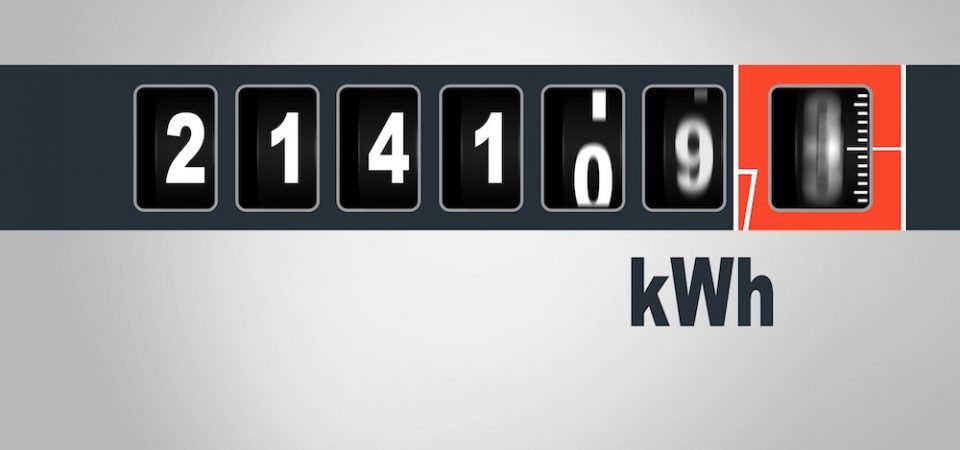
Five questions to understand the relationship between watt and kilowatt-hour
When we talk about electricity, what unit of measurement should we use ? Is it watt, kilowatt, or kilowatt-hour? What does it actually mean? Energyprice.be will help you to better understand and differentiate them.
Summary
- 1. What is the definition of a watt (W)?
- 2. What is meant by kilowatt-hour (kWh)?
- 3. What is a kilowatt peak (kWp)?
- 4. How much do domestic electrical appliances consume?
- 5. How do you calculate energy consumption in kWh and in euro?
- Points to remember
Knowing how to differentiate between a watt and a kilowatt-hour will help you understand your electricity bill more clearly. The total amount of your bill depends on the price per kilowatt-hour indicated in your energy contract and also on your electrical appliances. Your appliances are characterized by two pieces of information: their power and their consumption. How are these calculated?
Do you own a business with an energy consumption of more than 100,000 kWh?
Is your business paying too much for energy? Whether you run a small business or a large company, energy costs can eat into your profits. By comparing energy providers, you could lower your rates and save thousands each year.
Differences between a watt and a kilowatt
1. What is a watt (W)?
A watt (W) is a unit measuring electrical power. Specifically, it is the power of a domestic appliance capable of providing one joule* (J) of energy every second (s). As this is an important piece of information, most electrical appliances sold display the amount of electrical power they have expressed in watts.
The importance of knowing the power output of an appliance
Knowing the wattage of an appliance is particularly useful for comparing light bulbs. Written on the glass or the foot, it immediately gives the consumer an idea of whether the bulb is economical or not. For example, a 25W bulb will consume four times less electricity than a 100W bulb. However, it will consume five times more than a 5W bulb.
So, in order to make savings on your electricity bill, it is in your interest to choose your household appliances carefully. Ideally, of course, you should buy a bulb that meets your needs but one that also requires a small amount of energy to provide the desired service.
Converting units of power and order of magnitude
- 1 joule* per second (J/s) = 1 watt (W)
- 1,000 W = 1 kilowatt (kW)
- 1,000 kW = 1 megawatt (MW)
- 1,000 MW = 1 gigawatt (GW)
*A joule is a unit used to quantify energy. A joule of energy is equivalent to moving an object by one meter by exerting a force of 1 Newton (1J = 1N x 1m).
2. What is meant by kilowatt-hour (kWh)?

For an appliance to work, it needs an energy supply, in this instance, electricity. This gives us the notion of kilowatt-hour (kWh). This is a unit indicating the amount of energy consumed by an electrical appliance, and it is equivalent to 3.6 megajoules (MJ).
So it is the kilowatt-hour that your electricity meter measures. It is also based on this measurement that your supplier produces your electricity bill.
How do I convert from watts (W) to kilowatt-hours (kWh) or to watt-hours (Wh)?
To understand the meaning of the word “kilowatt-hour”, we need to break it down. “Kilo” is the prefix representing 1,000 according to the International System of Units (SI), while “hour” means “for one hour”.
This means that one kilowatt-hour corresponds to the energy consumed by an electrical appliance with a power output of 1,000 watts (1 kilowatt) for one hour. By extension, it is also correct to say that one kilowatt-hour represents the energy consumption of a 100W appliance operating for 10 hours or a 10W appliance operating for 100 hours.
In practice, a 40W bulb will consume
- 40 Wh (watt-hours) if it remains lit for one hour,
- 80 Wh if it remains lit for two hours,
- 960 Wh or 0.96 kWh (kilowatt-hours) if it remains lit for 24 hours,
- and 40 kWh if it remains lit for 1,000 hours.
In a nutshell, you simply multiply the (kilo)watts by the number of hours of use to obtain the (kilo)watt-hours.
>> Read also: 5 practical tips for estimating your electricity consumption
Are you still wondering what a kilowatt-hour is and in what way a watt-hour is a unit of energy? Our energy advisers are ready to answer all your questions by telephone on 0800 37 456 or by email (info@energyprice.be).
Contact one of our advisers
Converting units of energy measurement and order of magnitude
- 1 W = 1 J/s = 3,600 joules per hour (J/h)
- 3,600 J = 1 W x 1 hr = 1 watt hour (Wh)
- 1,000 Wh = 1 kilowatt hour (kWh) (= 3,600,000 J or 3.6 megajoules (MJ))
- 1,000 kWh = 1 megawatt hour (MWh)
- 1,000 MWh = 1 gigawatt hour (GWh)
3. What is a kilowatt peak (kWp)?

If you own photovoltaic panels or if you are researching them, you will have heard of another unit of measurement: the kilowatt peak (kWp). This piece of information indicates the maximum power provided by a solar panel under the sunniest conditions possible (in other words, irradiance of 1 kW/m² or 1,000 watts/m² at a temperature of 25°C).
For information, in Belgium, 1 kWp requires an average of 6m² of solar panels and provides around 850 kWh of electricity per year.
By comparison, a three-person Belgian household consumes around 3,500 kWh of electricity per year. If they want to cover half of their requirements, they will have to invest in a 12 m² installation. However, due to various technical aspects and the weather conditions encountered, the actual power output from a photovoltaic panel is generally 15 to 20% lower than the peak power.
Did you know? Before installing photovoltaic panels on your roof, compare the returns from the panels of a number of different manufacturers. To do this, please note that the higher the Wp for a given surface, the more efficient the panel. But, in addition to being characterized by their output per square meter, installations can also be differentiated by their price, which varies from company to company. In order to benefit from a high-quality system and the best price, you should consider taking part in a group purchase of photovoltaic panel installations.
4. How much do domestic electrical appliances consume?
In order to reduce the amount of your budget dedicated to electricity, we advise you to limit the use of your most energy-intensive appliances. Especially since consuming less is also beneficial for the environment, as electricity production is still heavily reliant on fossil and nuclear fuels.
List of the five most energy-intensive electrical appliances in the home*:
- The oven, which consumes more than 1,000 kWh of electricity per year on average, and the water heater and radiators for people who have electric heating;
- The hob consumes between 500 and 1,000 kWh per year;
- Air conditioning consumes between 500 and 1,000 kWh per year on average;
- The tumble dryer, which consumes 350 kWh on average per year but much more for older driers;
- The fridge freezer, which on average consumes between 125 and 250 kWh per year for the most recent models.
- Then come the dishwasher, the washing machine, the computer, the television, and the set-top box.
*Source: The Agence de l’Environnement et de la Maîtrise de l’Énergie (ADEME).
Did you know? Are you thinking of buying a new household appliance in the near future? Pay attention to the energy label so that you can immediately identify the least energy-intensive model! This label, which appears on new appliances, details the energy performance and indicates their class on a scale from A to G, based on their consumption.
5. How do you calculate energy consumption in kWh and in euro?

To determine your total electricity consumption, you need to include a number of elements, such as your method of heating and the number of occupants in your home. However, if you want to focus on a particular element, this is possible. It is particularly useful if you want to find out whether, for example, you are paying a lot for the lighting in your home.
Let’s say that you are interested in the lighting in your living room and that you have 5 LED light bulbs of 7 W each. Let’s also assume that they stay lit for six hours per day throughout the year and that you have a single-rate meter for your electricity. Under your supply contract, let’s also assume that you are billed at a rate of 0.07 euro per kWh. This is how to calculate the expenditure that this will represent for you:
- Total LED consumption: 7 W x 5 = 35 W
- Annual electricity consumption in kilowatt hours: 0.035 kW x 6 hours x 365 days = 76.65 kWh
- Annual electricity consumption in euro: 76.65 kWh x 0.07 euro = 5.36 euro
Do you need help to calculate your consumption in kilowatt-hours? Are you unclear how to make the conversion between a watt and a kilowatt-hour, or between a kilowatt-hour into watt hours? If so, please call us free of charge on 0800 37 456. Our experts will be pleased to help you.
Contact one of our advisers
Points to remember
Watt and watt-hour do not provide the same information. Whereas watts indicate the power needed for a unit of time, watt-hours indicate the amount of energy consumed over a given period.
If you want to convert watts into kilowatt-hours, you have to multiply the power output of the electrical appliance by the duration of use in hours and divide the result by 1000.
In addition, if you want to pay less, consider scheduling your most energy-intensive appliances to run during off-peak hours, if you have a dual-rate meter. Also, don’t forget to review your electricity contract and, if need be, change your electricity supplier. To find out whether it is in your interest to switch to a competitor, we advise you to carry out an electricity price comparison or telephone us free of charge on 0800 37 369. Our specialists will analyze your requirements and expectations with you to find the most effective solution.
Contact one of our advisers
Also read on our blog

One thing is certain: moving house is not the most relaxing experience. Whether you’re becoming an owner or a tenant, there are lo…

In recent years, Electricity and gas contracts for individuals have been reduced as a grief skin. One remembers for example the wi…

Are you paying too much for your energy bill? Find a new, cheaper contract with our comparison tool Energyprice and Creg Scan

When it comes to your monthly expenses, every cent counts! Using a price comparison tool such as Energyprice.be significantly help…